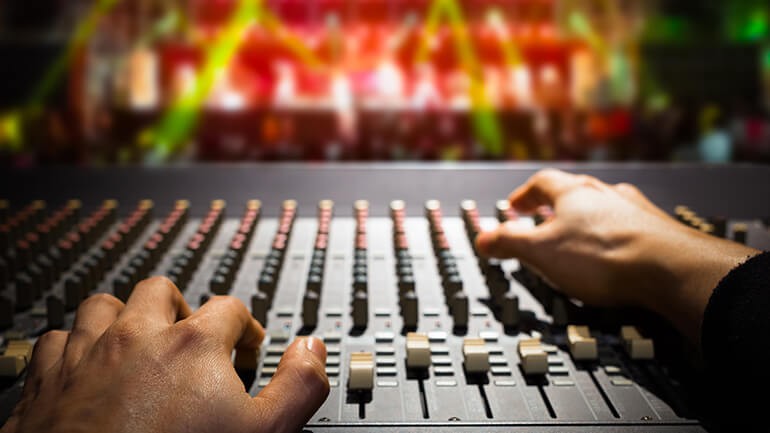Perfecting a Live Performance
How to make some basic adjustments to a concert multitrack after the fact

When done properly, a live recording of your music before an engaged audience can be a welcome departure from the usual studio routine. Unlike the potentially tedious approach to home multitracking, on stage there are no breakdowns, false starts or multiple tries—you get one shot, and it’s got to be good. Pick up any milestone concert album and that sense of urgency is immediately palpable and helps explain why so many live versions of classic songs often become “definitive” among the fan base.
Even well-rehearsed acts are likely to experience a few minor miscues along the way, some of which may not even be of their doing (i.e. microphone feedback or other electronic flare-ups). But a couple of flaws shouldn’t render an otherwise solid performance unusable. To wit, here’s how to make some basic adjustments to your live tracks after the fact, such as tweaking tone and volume, adding life to a sterile board mix, augmenting backing vocals and instrumental bits, plus more.
What you’ll need. First, who’s recording the gig, and how? Often it will be a venue’s live-sound mixer, who can take a feed from each input on the mix console and send the signals directly to a microSD card or external recording device. Though convenient, sometimes these unadorned “board mixes” can be surprisingly underwhelming, for the simple reason that they’re often missing the most important element—the audience. That’s because stage microphones are typically low-gain, highly directional dynamics that only pick up what’s directly in front of them in order to discourage bleed and feedback; additionally, instruments such as bass and keyboards are usually patched directly to the console, further compounding the sterility issue. Accordingly, one cannot overstate the importance of including a dedicated ambient mic or two, situated a good distance from the stage and elevated on boom stands to capture the crowd vibe, as well as the sound of the PA.
Tidying up. Before transferring the raw tracks to your home recorder, there are a few preliminary steps you can take to streamline the subsequent mixing process. If the performance is at least an hour long, you’re likely to have a sizable master file that could swamp even the peppiest of processers. Ideally, then, you’ll want to work with each song individually, which not only makes it easier to move around, but also allows you to make edits to specific tracks without impacting other parts of the master. To do this, open the full concert in your sound editor, then add mark points at the start of each song; from there you’ll simply highlight and copy each region to a separate folder, until you have all the selections lined up in order. While you’re at it, be sure to label the various tracks before you cut the songs out of the master, so you don’t have to re-name each part afterward.
Preparing to mix. When laying out the tracks in stereo, try to be faithful to the actual stage configuration as seen from the mix position—lead vocals centered, guitars or keyboards to the left and right, drums in the middle, and so forth. It’s not just about aesthetics, either; as there is likely to be some bleed between adjoining microphones, maintaining the correct physical positioning in the mix will help ensure that any leakage stays in the “right” spot. For this reason, you’ll also want to tread carefully when adding processing or EQ, as any tonal adjustments you make to one source may also affect the sound of instruments that have strayed into the same mic (say, a guitar amp located directly behind the lead vocalist).
You’ll mix the performance like any studio session, making sure vocals are prominent and there’s plenty of rhythm-section bottom. You may find it necessary to ride the faders here and there in order to highlight guitar solos or other instrumental passages. If using room mics, place them in stereo and gradually raise the levels until you have a good balance between the ambient and direct stage sound.
Fine tune, don’t fix. Try to live with any imperfections you hear along the way, since attempts to retune a vocal or patch over a brief guitar flub could actually draw attention to the mistake instead. If you’re careful, however, in some instances you can augment an existing part, such as adding a second layer of harmony vocals, or discreetly dropping in some shakers or other percussion. And if you weren’t able to use room mics, a small amount of reverb may be applied to vocals or some instruments if the tracks are still too arid. Rather than getting hung up on minor details, however, focus on the overall vibe of the recording—if it was a good night, the performance should speak for itself.






Community
Connect with BMI & Professional Songwriters